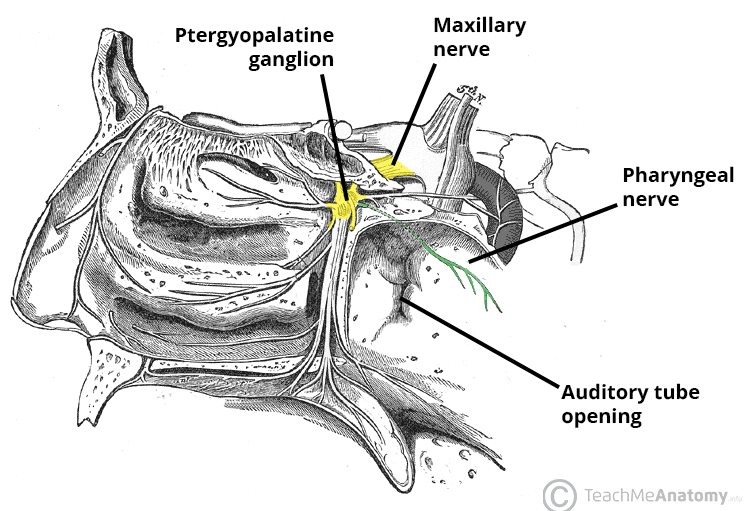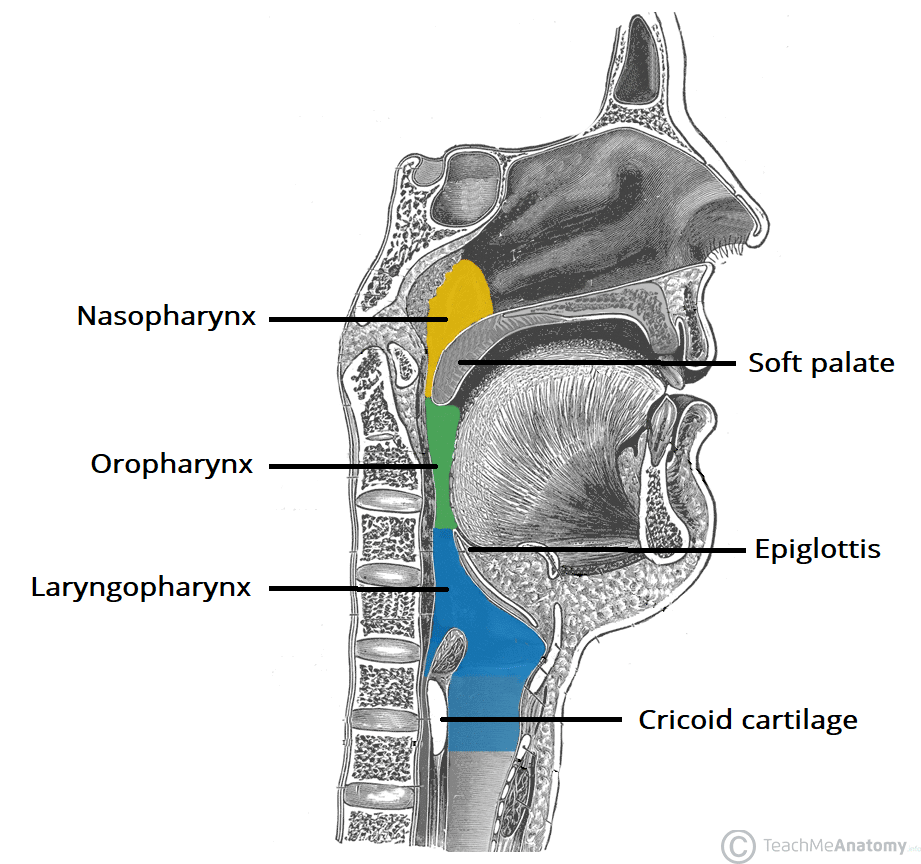The pharyngeal nerve is a nerve of the head and neck. It is a branch of the maxillary division of the trigeminal nerve.
It supplies sensory and parasympathetic innervation to the mucosa of the superior nasopharynx.
Premium Feature
3D Model
Course
The pharyngeal nerve arises from the maxillary nerve within the pterygopalatine fossa.
Within the fossa, it receives parasympathetic fibres from the pterygopalatine ganglion (these reach the ganglion via the greater petrosal nerve).
The pharyngeal nerve leaves the pterygopalatine fossa posteriorly through the palatovaginal canal. It is accompanied by the pharyngeal branch of the maxillary artery.
It emerges onto the superior aspect of the nasal cavity, posterior to the auditory tube opening. Here, it supplies sensation to the mucosa of the superior nasopharynx and parasympathetic innervation to the mucosal glands.

Fig 1
The pharyngeal nerve arises as a branch of the maxillary nerve within the pterygopalatine fossa.
Sensory Function
The pharyngeal nerve supplies cutaneous innervation to the mucosa of the superior nasopharynx.

Fig 1
The mucosa of the nasopharynx receives sensory and parasympathetic innervation from the pharyngeal nerve.
Parasympathetic Function
The pharyngeal nerve supplies parasympathetic (secretomotor) innervation to mucosal glands of the superior nasopharynx.